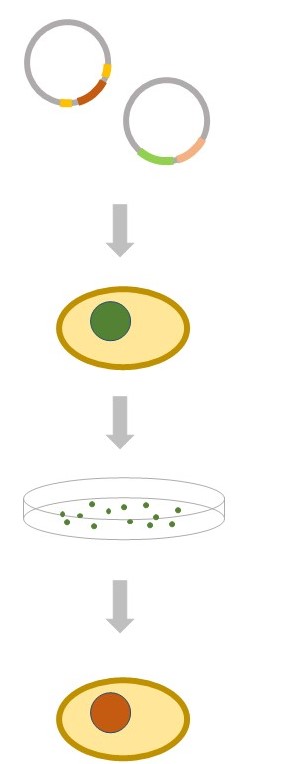Yeast is eukaryotic microorganism of fungus kingdom. Due to the features of yeasts, they have been widely used in genetic and cell biology as a model for eukaryotes.
Lifeasible provides our global customers gene editing services in polyploidy yeast, assisting constructing new stains based on gene functional studies for further applications. Our experienced scientists are willing to assist you with all their heart.
Yeast microbes are one of the earliest domesticated organisms. The useful physiological properties of yeast have led to their use in the field of biotechnology.
The model organism Saccharomyces cerevisiae is easy to genetically engineer, due to its physiology, metabolism and genetics are well studied. It's widely utilized in physiological, biochemical, cellular studies. And as a simple eukaryotic cell, it can serve as a model for all eukaryotic organisms for studying fundamental cellular processes. Many compounds important to human biology were first found in yeast by studying the homologues.
However, compared with S. cerevisiae, genomic engineering in these polyploidy strains is more challenging, due to the limited studies and molecular tools.
Lifeasible provides gene editing services in yeast to handle different research purposes. Our method is based on recombinases system, which only involves site-specific recombinases and a pair of recombination DNA sequence. By introducing different recombinases systems into cells, multiple gene editing is practical. Our gene editing services include site-specific gene knock-out and site-specific gene knock-in in

1. Plasmids Construction
Plasmids contains the reporter gene flanked by recombination recognition sequences and homology arms of the site. Plasmids contains site-specific recombinase gene.
2. Transformation
The first plasmid should be transformed first, then identifying the cells expressing the first reporter gene. Then transforming the second plasmid to the cells expressing the first reporter gene.
3. Reporter Gene Excising
The second plasmid is transformed for excising the first reporter gene. At the end, under the absence of antibiotics, exploiting the polyploidy of the genome as a tool to excise the second reporter gene and the site-specific recombinase gene.
4. Genetically Modified Cells
The markerless genetically modified cells are generated.
Lifeasible offers our customers innovative, efficient, customer-tailored and high-quality gene editing services. And we promise to deliver the results and products on time and with high quality. We serve researchers all over the world with heart and soul. Please feel free to contact us.